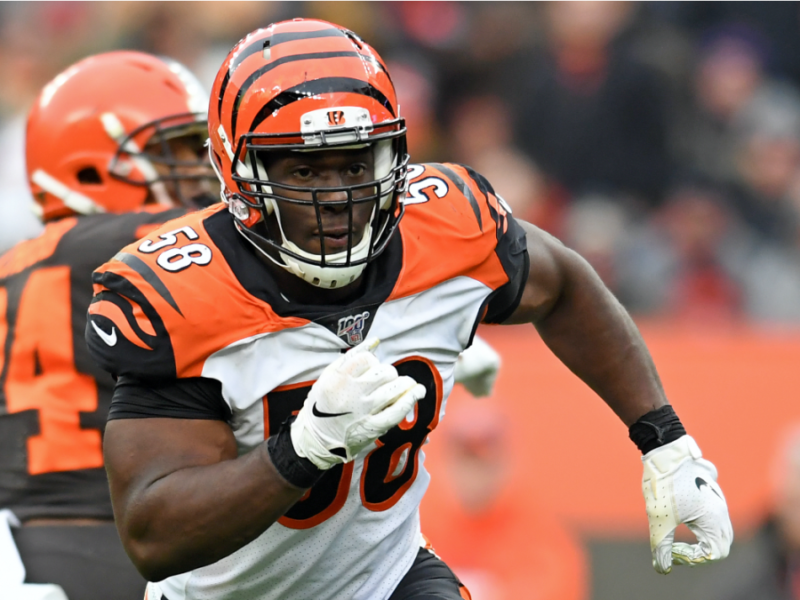
Carl Lawson Achilles Rupture: Next steps?
Carl Lawson Achilles Rupture: Next steps? https://phoenixspineandjoint.com/wp-content/uploads/2021/08/Carl_Lawson_American_football-964x1024.jpg 964 1024 Phoenix Spine & Joint Phoenix Spine & Joint https://phoenixspineandjoint.com/wp-content/uploads/2021/08/Carl_Lawson_American_football-964x1024.jpgNew York Jets Carl Lawson should have a good recovery after suffering an Achilles rupture on August 19. After Lawson heard a pop along his ankle during practice, his medical staff carted him off the field.
After this injury – even if you can limp – you should not put any weight on the leg. Any additional stress will cause further stretching of the tendon. And if the tendon end moves higher up in your leg, it will make the surgical procedure more complicated.
The New York Jets medical staff knew he likely ruptured his Achilles based on an examination, but an MRI was used to confirm the injury a day later. The soonest a surgeon can perform the surgery, the better the outcome. If you wait too long to have the surgery, the surgery could be more complicated.
The best predictors of a successful repair are dependent on your age and the tightness of the repair. If you are a younger, active individual, the surgical route is your best option to limit the chances of a re-rupture. If you are an older, sedentary individual, your doctor may advise a conservative option.
Lawson, 26, is an ideal surgical candidate.
Lawson’s next steps after surgery
After surgery, Carlson’s foot will be in a splint or a cast to promote healing and prevent the tendon from stretching. Your procedure and your surgeon guidelines will determine how much weight you can put on the leg. Some may be completely off the foot for several weeks, while others initiate light weight-bearing in a walking boot with heel lifts after a couple of weeks.
The first weeks after surgery, you will perform light exercises to prevent any blood clots. And you should keep your incision dry and clean for the first six weeks to prevent an infection.
Once cleared for physical therapy, you may be using an assistive device to get around. Your first physical therapy will focus on ankle mobility exercises to prevent the joint from stiffening and help limit scar formation. You will perform core, leg and ankle strengthening to keep your body strong.
However, you will be limited to the amount of dorsiflexion (when you move your ankle towards your head) to prevent any stretching of your Achilles tendon.
A couple of weeks after surgery, your foot will be in a boot that will help limit any additional strain. You will have heel lifts in your boot when you start walking to protect the repair. Once
you can walk in the boot with no heel lifts and no complaints of pain, your clearance will clear you to wear a shoe.
By three months, you will be walking, and your physical therapist will ensure you have good walking mechanics and progress your strengthening and balance program. If you are experiencing pain doing any activities, you are not ready for a progression. And if you have minimal pain, you should follow your exercise program and not overdo it. Too much strain early on a tendon could result in damage or a re-rupture.
By four to six months, you may begin performing a sport-specific activity program. When you can perform a single heel raise without pain, you can progress to jogging and eventually running. At this time, you should still refrain from overstretching this tendon. An appropriate tension in a tendon is needed to gain its full strength.
You will progress to sports-specific activities by six to nine months, performing high-speed running and plyometrics.
When you have completed physical therapy, your strengthening program should continue at home because tendon remodeling can take up to one year.
If you want to ensure you have a good outcome and return to your previous activities, contact one of our Phoenix Spine & Joint doctors to get on the road to recovery.
- Posted In:
- Achilles Tendon Tear Repair







